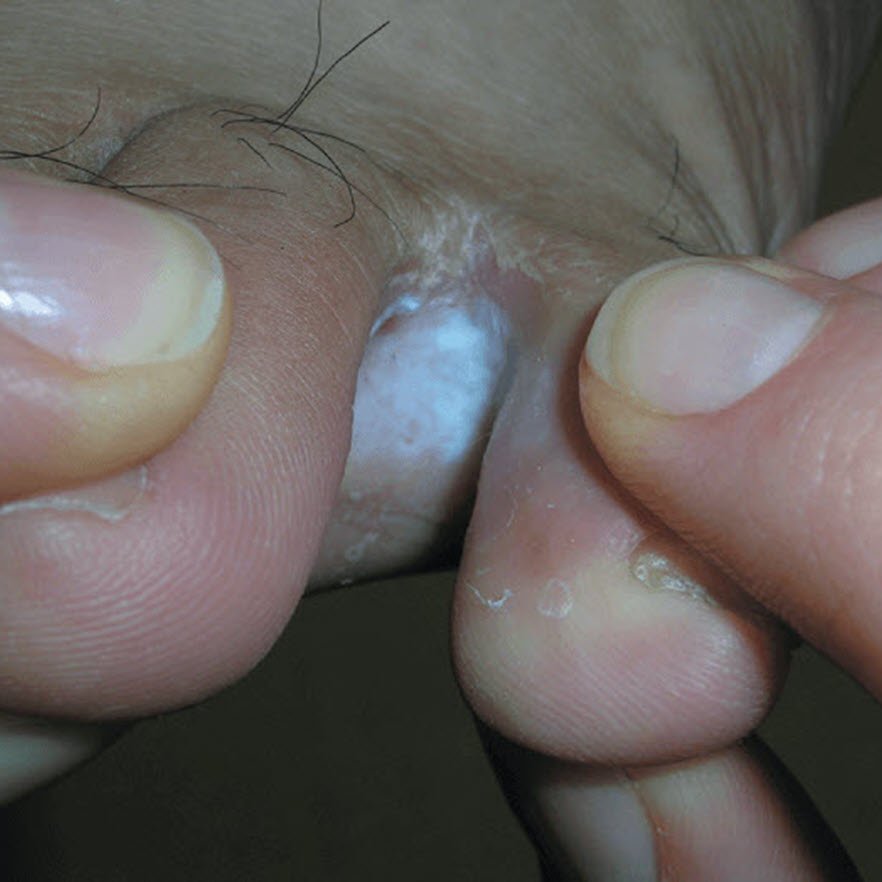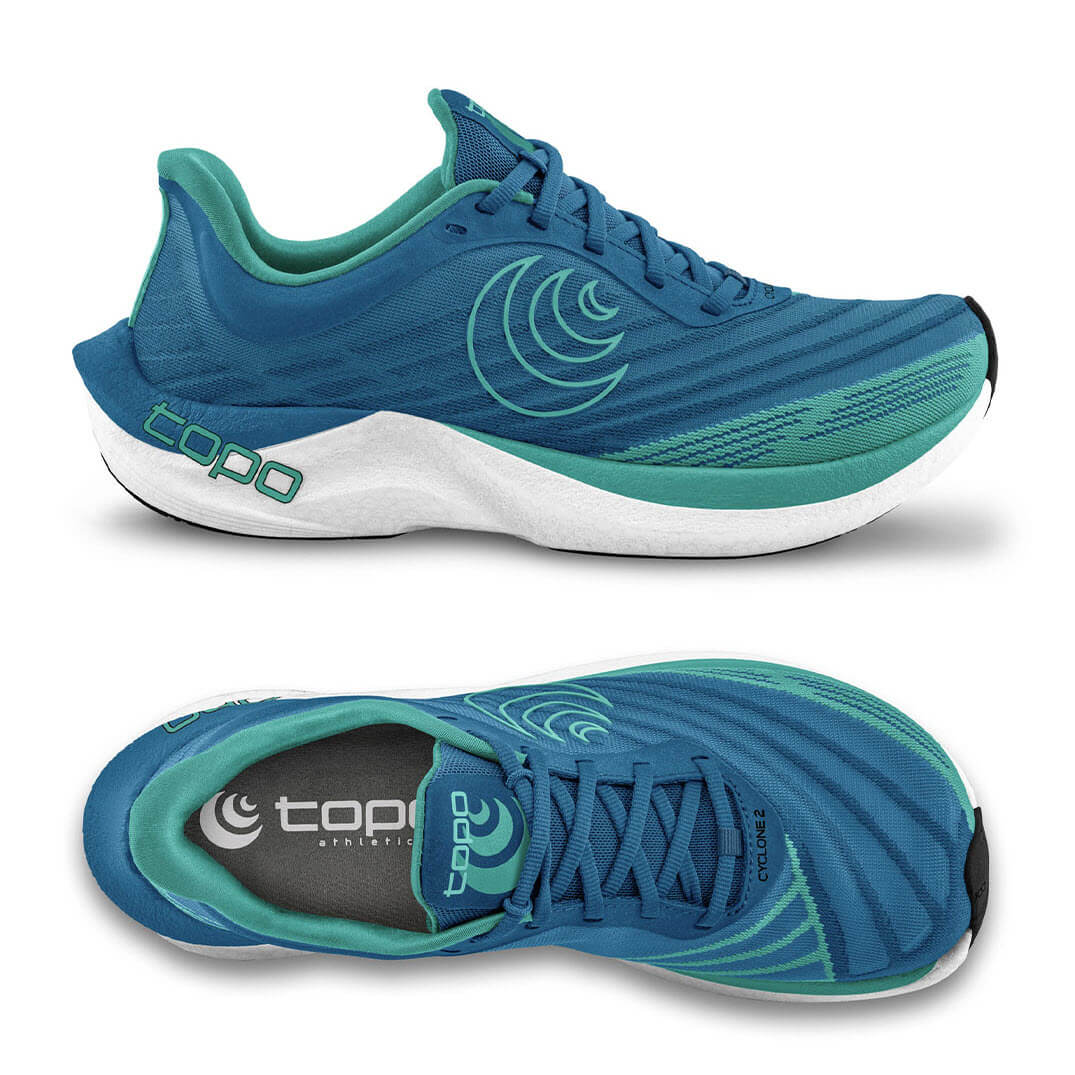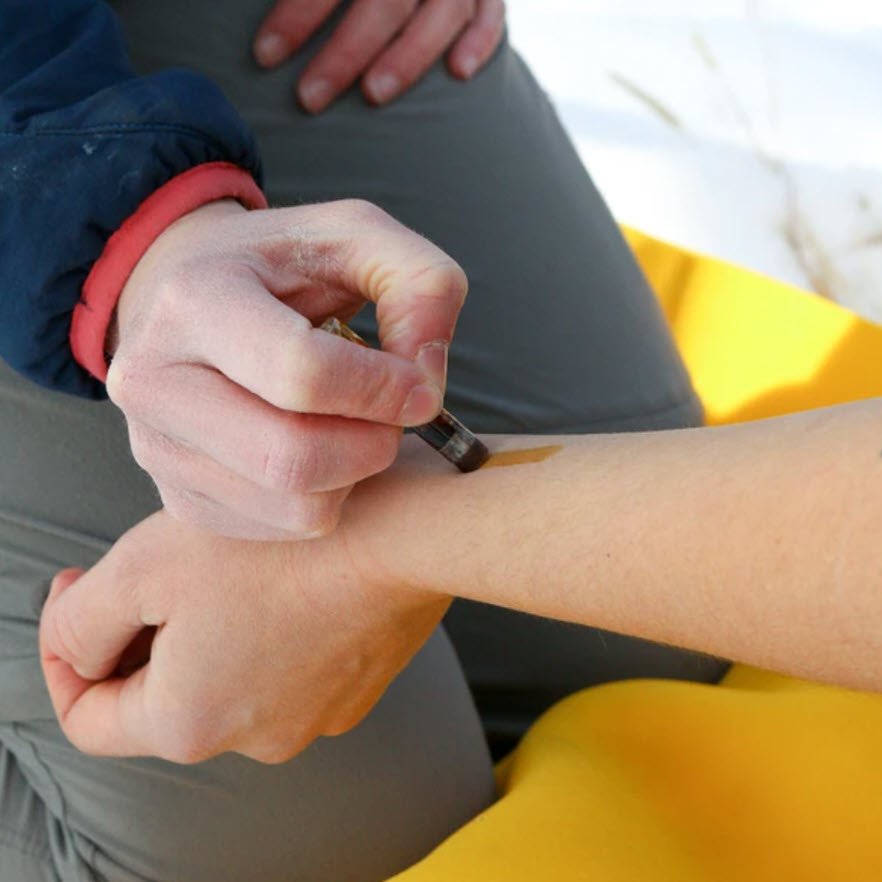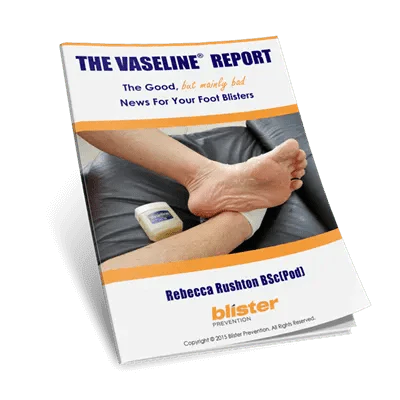Tinea pedis, also known as athlete’s foot, is a very common fungal foot problem that I encounter regularly. It often appears as small itchy foot blisters. Under the arch of the foot and between the toes are common areas. But not all types of tinea cause blisters. And not all types of tinea are itchy.
Tinea is a fungal infection of the skin. As you may know, fungal infections can thrive in dark, warm moist areas. This is exactly the environment your feet have to deal with. We wrap our feet up in shoes and socks while the numerous sweat glands excrete sweat as we exercise - often for long periods of time.
Tinea is also common because it's easy to spread. Athletes are especially vulnerable as the dark, warm, moist in-shoe environment is the perfect breeding ground for a fungal infection. But there are ways to curb the spread of athlete's foot and I am going to share some tips that help with tinea pedis prevention and treatment.
What does tinea pedis look like?
There are three types of fungal skin infections that occur on the feet. Only two of them can appear as blisters.
1. Interdigital tinea pedis
Tinea between the toes that looks like white soggy macerated skin. The most common interdigital space affected is between the 4th and 5th toes. As the infection clears, the skin becomes dry and peely.
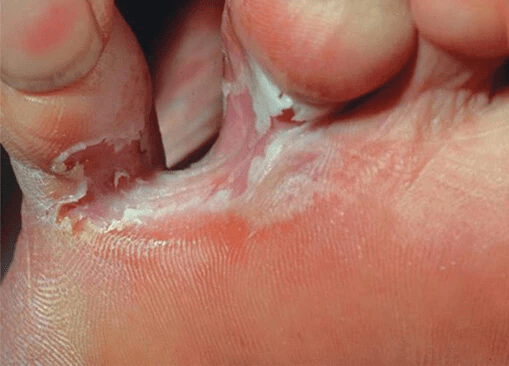
Interdigital athletes foot showing inflamed, blistered and peeling appearance (How To Cure Fast)
2. Vesicular tinea pedis
Tinea that appears as small itchy foot blisters filled with clear fluid. This type of tinea can occur on the sole of the foot, typically under the arch, and between the toes. As the blisters resolve, the skin becomes dry and peely.
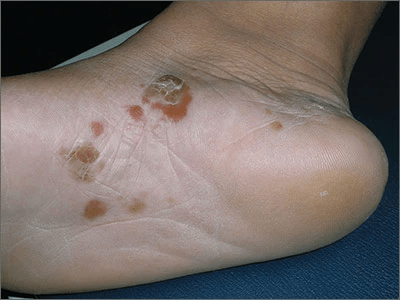
Vesicular tinea pedis showing drying blistered skin (Access Pediatrics)
3. Moccasin tinea pedis
A type of tinea that appears as dry, dusty, scaly skin. It appears most commonly on the sole and the sides of the feet.
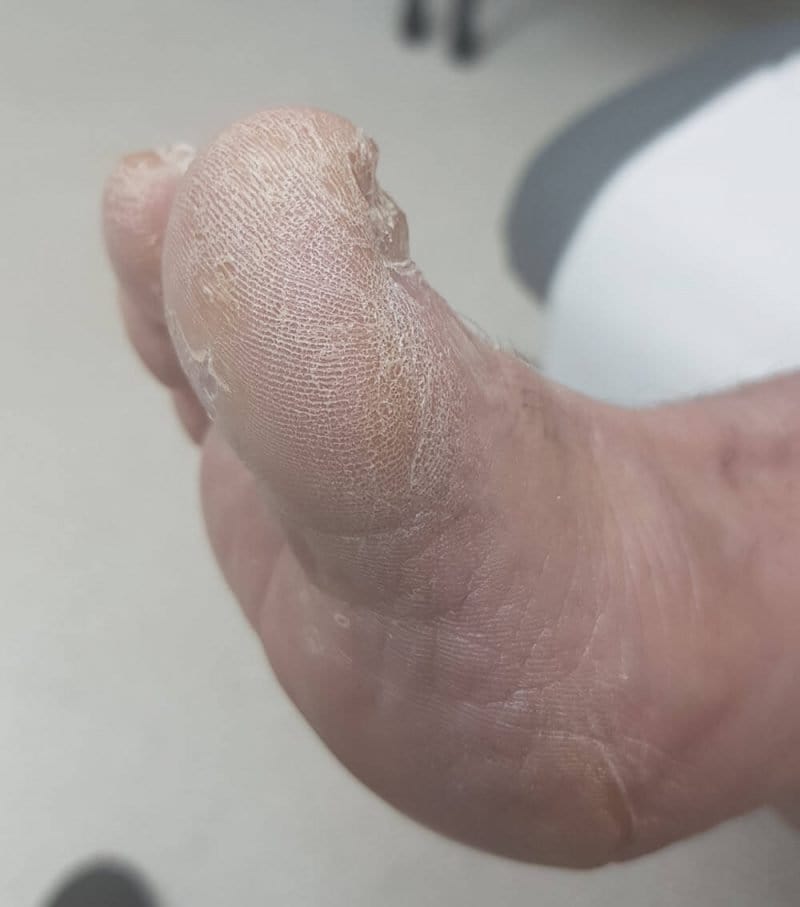
Moccasin tinea, here on big toe, appears as dry skin. This person has also had longstanding onychomycosis (fungal toenails).

Moccasin tinea showing dry skin appearance (Research Gate)
Causes of tinea pedis
There are several species of fungi called dermatophytes behind the cause of athlete’s foot. The most common ones are Trichophyton rubrum, Trichophyton interdigitale and Epidermophyton floccosum.
The fungi thrive in warm, humid environments. This explains why tinea is common on the feet. When we wrap our feet up in socks and shoes, sweat has little chance of evaporating. Particularly from between the toes as they are sitting so close together. Thus, a huge part of tinea pedis prevention is making sure that your feet are dry and cool whenever possible.
Tinea pedis - Symptoms
These fungi destroy the keratin in the skin and causes inflammation. This can lead to redness, blistering, peeling skin and often itching. The symptoms of tinea will become worse if you wear the wrong footwear and fail to follow foot care routines. Unfortunately, even without symptoms, there is a chance that you may have already contracted tinea pedis without realising it.
Tinea pedis prevention - What can you do?
To protect your feet and prevent tinea pedis, you need to keep your feet clean and dry.
Avoid these
- Avoid walking barefoot in communal bathing areas like swimming pools, saunas, locker rooms, caravan park showers or anywhere else with a damp floor that other people walk on. If you have to go to these places, wear thongs or sandals to prevent direct contact with the floor.
- Don’t wear enclosed shoes if you can get away with it. The lack of ventilation will encourage fungal proliferation. Thongs and strappy sandals are great choices for casual wear. Most running shoes are made with breathable materials and construction methods these days, so opt for mesh uppers over leather uppers.
Do these
Wash your feet every day and dry them well. Pay special attention to the area between the toes. If you can’t reach your toes, use a hairdryer (just on the air cycle) and point it towards your toes.
- Leave your socks off for a short while after your shower to allow maximal evaporation. If that doesn’t work well enough, wipe an alcohol-wipe or cotton bud dipped in surgical spirit between your toes. These topical applications evaporate rapidly and dry the skin. Be sure to leave your feet uncovered and flare your toes if possible to aid full evaporation. Add the hairdrier tip (above) to hasten the process.
- Moisture-wicking socks help to move sweat away from the skin surface to leave your feet a little dryer. Marino wool and synthetic blends do this best. Cotton socks should be avoided.
- If you have a fungal nail infection (onychomyosis), treat this too.
Don't forget these
- Expose your skin to the air as much as possible.
- Wash your hands after touching your feet, especially if you scratch your itchy foot blisters.
- Are you living with someone who has athlete’s foot? You can safeguard yourself by not sharing towels or bathmats, wearing thongs in the shower and cleaning your shower recess with sodium hypochlorite (bleach).
- Have you also got jock itch? It’s likely you got this from your foot tinea. I’m afraid your underpants can easily carry fungal spores as you pull them over your feet. You crotch is also a perfect warm humid environment that tinea can thrive in. So while you have an active fungal infection on your foot, be sure to follow the golden rule “socks before jocks” so you avoid spreading the infection.
Treating tinea pedis
Fortunately, there are several topical applications like antifungal creams, gels, ointments, sprays and powders to combat the problems of tinea pedis. You can get these medicines over-the-counter at the pharmacy without needing a prescription. I recommend Lamisil (Terbinifine) cream or spray as it is very effective on a large range of fungi. Apply it to the area after it is been cleaned and dried. Keep rubbing the medicine over the area until there is no residue left over. If you’re using a spray, allow it to dry before you put your socks and shoes.
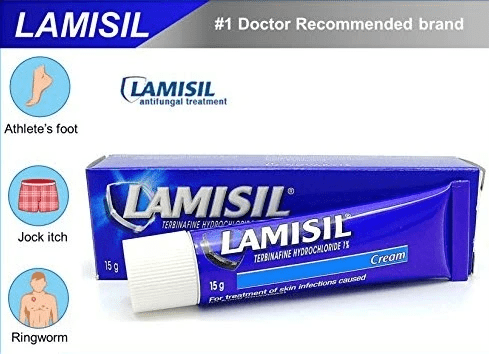
Lamisil cream for treating all types of tinea pedis
Continue to apply your topical treatment until all signs and symptoms disappear, then extend its use for a further two weeks. This is to ensure the invisible fungal spores on your skin are completely eliminated.
One thing we do know is tinea often recurs. Even if you successfully treat it, you will be susceptible to picking it up again, even if you’re diligent in your foot hygiene. Don’t be disappointed – expect it at some point and jump straight back onto your antifungal medicine so you can relieve it as soon as possible.
Should you visit your doctor?
With proper care and application of the topical medicine, the severity of symptoms should lessen within 2 weeks. But if there is no visible improvement, then you need to contact a doctor.
Your doctor may prescribe an antifungal tablet if your tinea infection is particularly widespread, recurrent or resistant to the topical treatments. First, they may conduct tests to make sure you are not suffering from any other foot condition. This may include using an ultraviolet light and examining skin scrapings. Once the doctor confirms your condition they can recommend a plan for your recovery.
Keeping your feet clean and dry
Tinea pedis is a common foot problem that sometimes presents as little itchy foot blisters. These blisters have nothing to do with friction – they are caused by the fungus affecting the skin. With the right topical medicine and the right practices, you can quickly treat and prevent fungal infections on your foot. Tinea pedis prevention means keeping your feet dry and clean, avoiding contact with damp surfaces that other people walk on, and making sure you use the right cream for an appropriate length of time. If all else fails, you need to visit a doctor for treatment.
